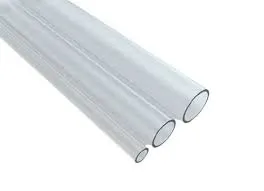oct. . 31, 2024 20:33 Back to list
Understanding Gas Pipe Fittings and Their Essential Applications in Plumbing Systems
Understanding Gas Pipe Fittings Essential Components for Safety and Efficiency
When it comes to gas piping systems, the importance of selecting the right fittings cannot be overstated. Gas pipe fittings play a crucial role in connecting different sections of piping, ensuring that gas is transported safely and efficiently throughout a building or facility. With various types of fittings available, understanding their functions and applications is essential for anyone involved in plumbing, gas installation, or maintenance.
Types of Gas Pipe Fittings
Gas pipe fittings come in several varieties, each designed for specific purposes. The most common types include
1. Elbows These fittings are used to change the direction of the gas flow. Available in angles like 90° and 45°, elbows help navigate around obstacles within a piping system.
2. Tees A tee fitting allows gas to flow in three different directions, creating a branch line from a main line. This is essential for distributing gas to various appliances or fixtures.
3. Reducers These fittings enable the connection of pipes of different diameters. A reducer can take a larger pipe and connect it to a smaller one, allowing for efficient flow control and system adjustments.
4. Couplings and Unions Couplings are used to join two sections of pipe in a linear fashion, while unions allow for easy disconnection of pipes for maintenance or repairs without having to cut the piping.
5. Caps and Plugs Caps are used to seal the end of a pipe, while plugs can be used to close off the opening of a fitting or valve, preventing gas from escaping or entering an unused section of the system.
gas pipe fittings

Materials Used in Gas Pipe Fittings
Gas pipe fittings are available in various materials, each with its own advantages. Common materials include
- Steel Known for its strength and durability, steel fittings can withstand high pressure and heat, making them ideal for gas applications. - Brass Often used for smaller installations, brass fittings resist corrosion and provide a reliable seal.
- Polyethylene and PVC These plastic materials are also used for gas piping in certain situations, particularly in underground applications, where their resistance to corrosion and ease of installation come into play.
Safety Considerations
When dealing with gas pipe fittings, safety should always be the top priority. Proper installation and maintenance of gas fittings are critical to prevent leaks and ensure the system operates efficiently. It is vital to use fittings that are compatible with the type of gas being transported, whether it’s natural gas, propane, or another gas. Regular inspections and adherence to local codes and regulations can further enhance safety.
Conclusion
In conclusion, gas pipe fittings are integral components of any gas supply system. By understanding their types, materials, and the importance of safety, professionals can make informed decisions that ensure reliability and efficiency in gas installations. Whether for residential, commercial, or industrial applications, the right fittings not only facilitate smooth gas flow but also contribute significantly to safety standards. As such, knowledge and caution in selecting and maintaining gas pipe fittings are essential for the well-being of occupants and the integrity of the system.
-
High-Quality UPVC Water Supply Pipe for Durable Plumbing Solutions
NewsJul.23,2025
-
High-Quality PVC-M Water Supply Pipe for Reliable Plumbing Solutions
NewsJul.22,2025
-
High-Quality PVC Transparent Pipe with Clear Visibility & Durability
NewsJul.22,2025
-
Premium Wireless Headphones: Noise Cancelling & Long Battery | Order Now
NewsJul.21,2025
-
High-Quality PPR Pipes and Fittings Durable ERA PPR & PVC PPR Solutions
NewsJul.08,2025
-
Black HDPE Cutting Board - Durable, Non-Porous & Food Safe HDPE Plastic Cutting Board
NewsJul.08,2025

